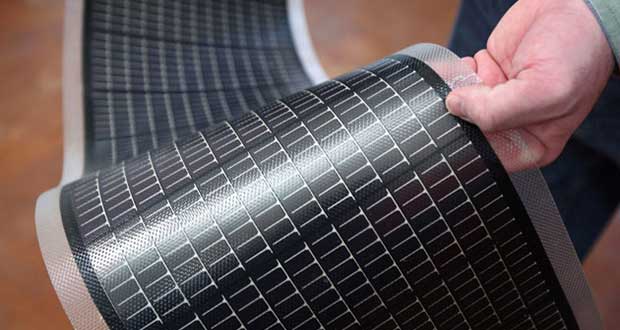Advancements in technologies have given light to the new age solar cells are light, thin, and flexible. They offer amazing alternatives to power advanced electronic devices.
A postdoc team working at Derya Baran revealed that instead of using bulky batteries or establishing complicated connections to the electrical grid, they decided to use lightweight and ultrathin organic solar cells. These cells could harvest energy from light in the indoor and outdoor premises as well.
Note that till now, ultrathin organic solar cells were being used by using thermal evaporation or spin-coating. But the sad fact is that they are not scalable options; hence, they limit the geometry of the device. This new technique makes use of conductive and transparent material named as indium tin oxide as an electrode. But the biggest disadvantage of using it is its inflexible and brittle structure. In order to deal with these limitations, the Baran teams made us of inkjet printing. They developed functional inks for every layer of the solar cell architecture.
Instead of using ITO, they preferred flexible, conducive, and transparent polymer, which is called PEDOT: PSS or widely known as poly polystyrene sulfonate. The layers of this electrode were designed by sandwiching light-capturing organic photovoltaic material. The ultimate design could be further sealed using propylene that is a waterproof, flexible, and biocompatible proactive coating.
Inkjet printing is very amenable to scale up, and the project could be led with low-cost manufacturing. However, developing a functional ink was the real challenge for the teams. The experts say that inkjet printing involves its own scientific concepts. It requires more effort to handle intermolecular forces in the cartridge and the ink in such a manner that only fine droplets come out of the small nozzle. Moreover, solvents also play an important role in this process because the drying behavior affects overall film quality.
After optimizing the composition of the ink for the device’s each layer, they printed solar cells on glass to execute performance evaluation tests. During this testing phase, they were able to achieve power conversion efficiency (PCE) of almost 4.73%. The system was capable enough to beat the previous record set by the fully printed cell, which was reported to be 4.1 percent only. After getting reliable results, the team also printed these cells on an ultrathin flexible substrate. With this new design, they were able to achieve a PCE of 3.6%.
The teams believe that their findings have presented a new concept for the upcoming generation. These ultralightweight, versatile, and highly efficient printed solar cells can be used as an independent source of power or could be integrated into other skin-based devices.
Citation
https://phys.org/news/2020-08-thin-skinned-solar-panels-inkjet.html?ocid=uxbndlbing
Leave a Reply
You must be logged in to post a comment.
